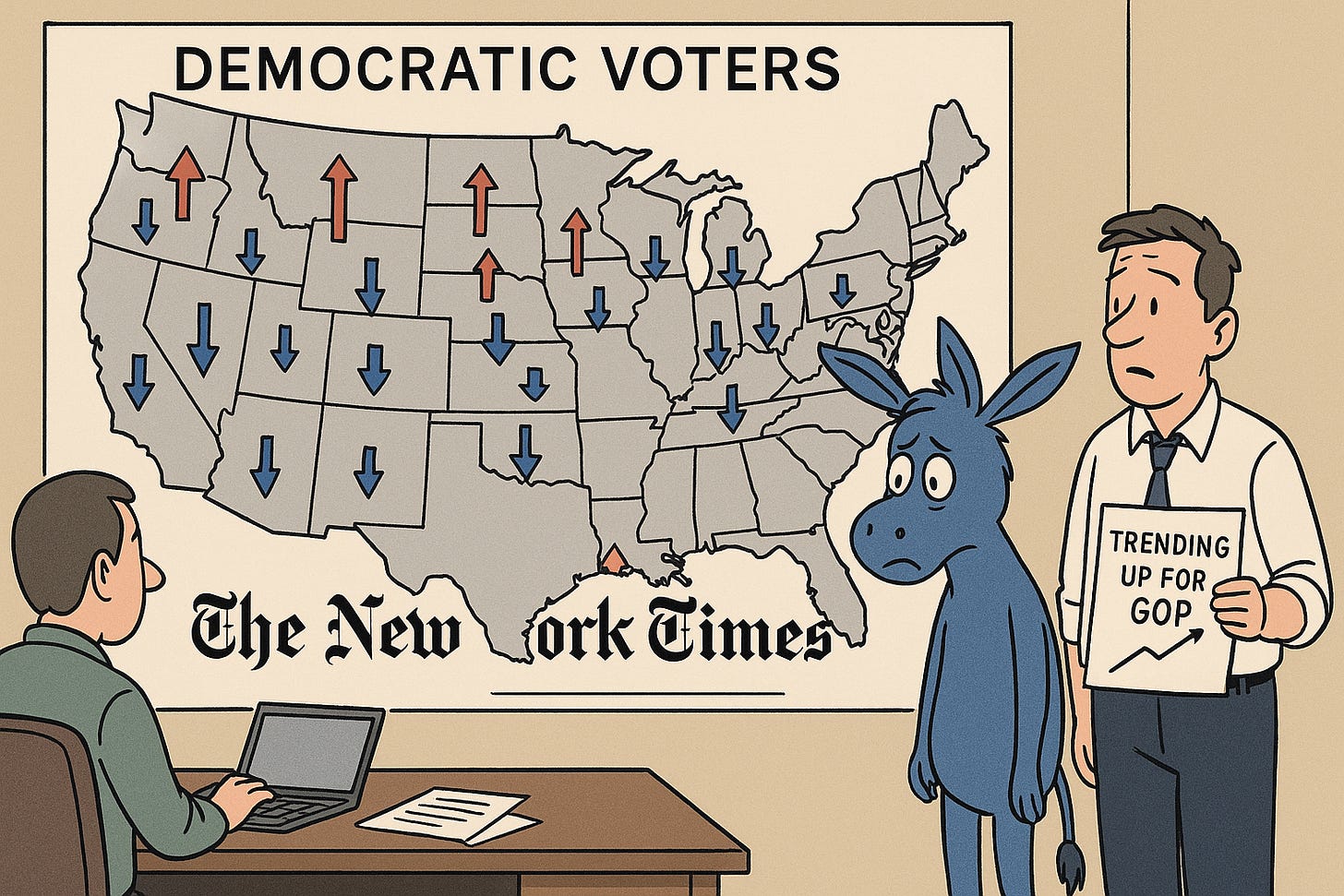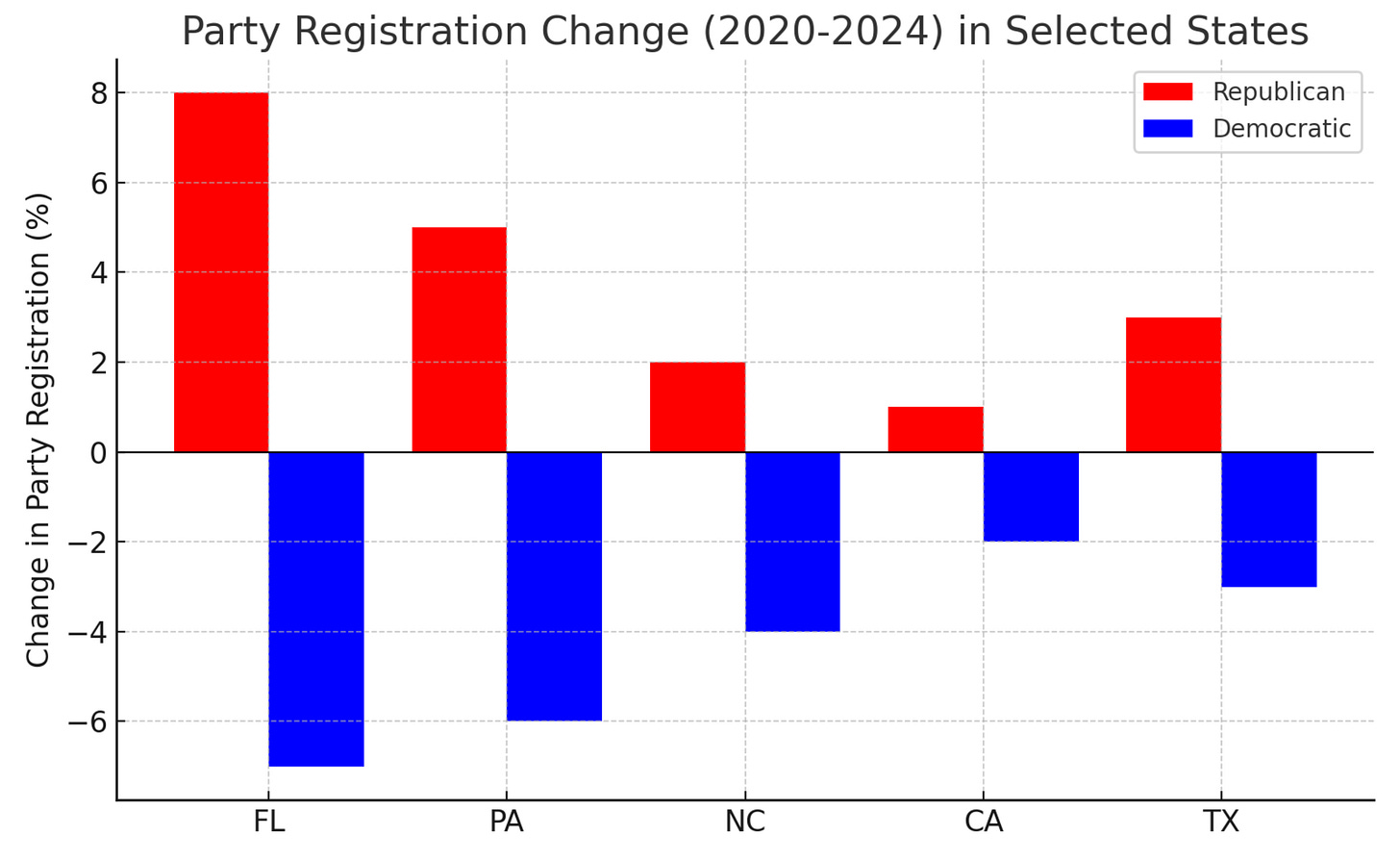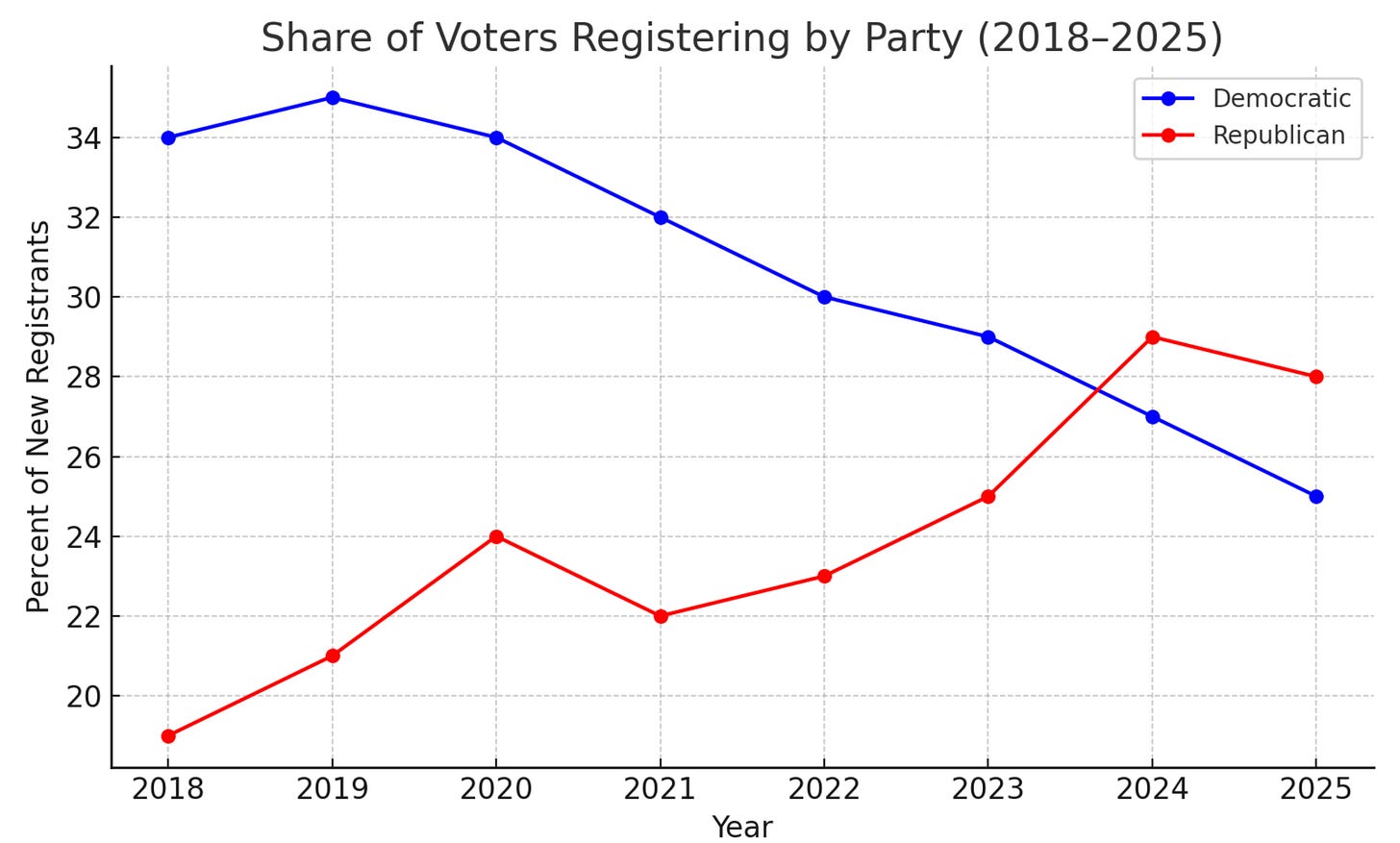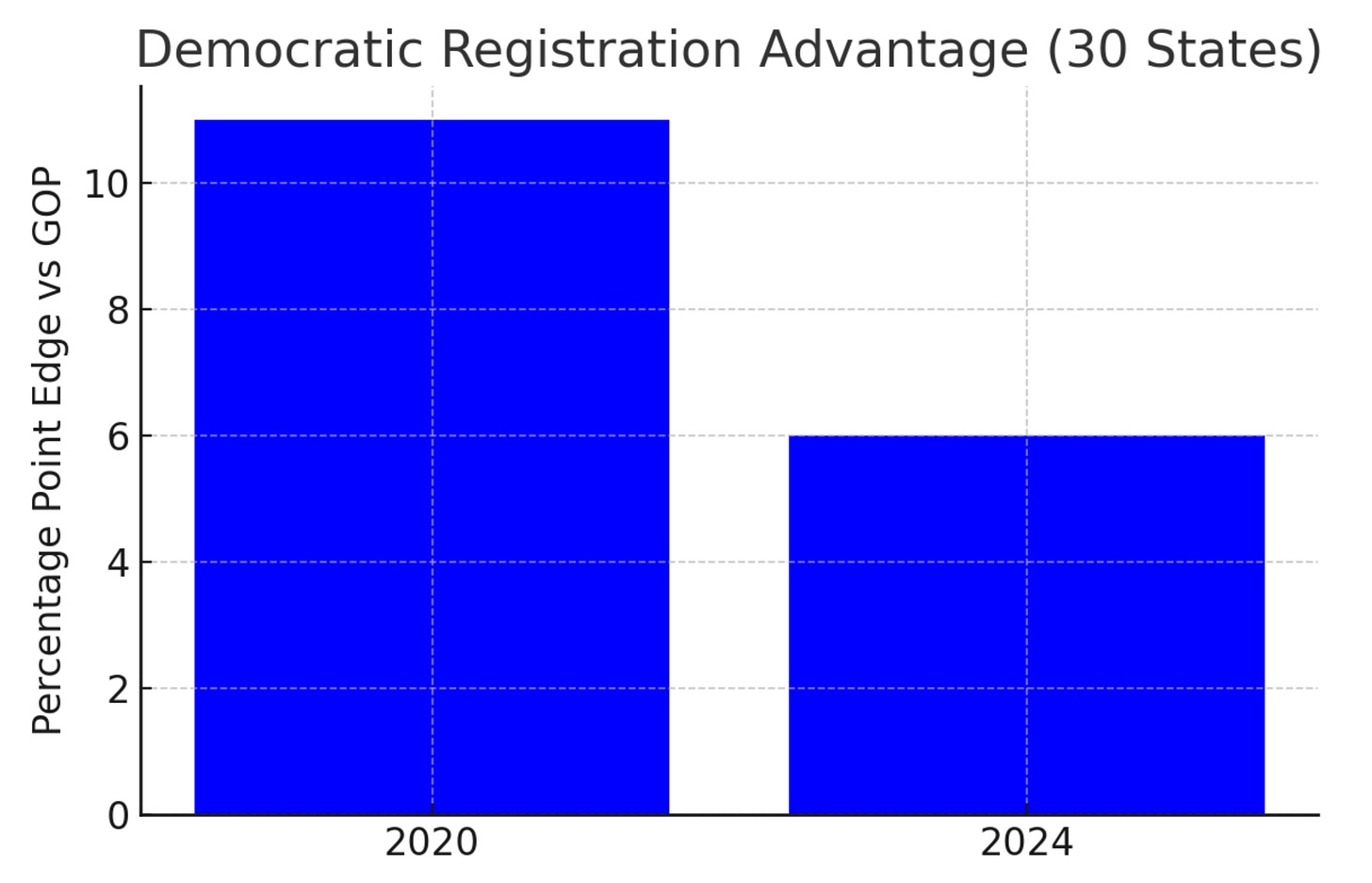New York Times Deep Dive Shows Democrats Have A Nationwide Voter Registration Problem
When the “newspaper of record” for liberals in America identifies a very bad trend for Democrats, you know it’s bad… A deep dive…
⏱️ 4 minute read
National Democrats: A Party in Retreat
A sweeping New York Times investigation (subscription required) lays out just how far Democrats have slipped since 2020, with Republicans picking up ground in every state that tracks partisan registration. The data show a party losing millions of voters while the GOP gains strength.
That’s the national picture. Here in California, I went into the Secretary of State’s own numbers to see if the same trend is playing out—and the results may surprise you.
What’s driving this movement, and how deep does the erosion go—even in places long thought to be safely Democratic? The answers, and the implications for 2028, are sobering.
Not on board yet? Join in today! A free subscription brings most posts straight to your inbox. For just $5 a month or $50 a year (if you sign up by 9/2), a paid subscription unlocks everything I publish plus some extra perks. Why step up? Because now more than ever, it matters to support independent political writing that answers only to readers — not to any interest groups. Help me call balls and strikes.
There’s a lot below the firewall - only about 10% of the piece is above, with a lot of information and analysis below. And there are CHARTS! Three of them!
The Nationwide Decline
The Times analysis shows the pattern is broad: in all 30 states with partisan registration, Democrats have lost ground while Republicans gained. Florida flipped Republican with a 1.2 million-voter swing, turning a swing state into a GOP bastion. Pennsylvania’s Democratic lead fell from 517,310 in 2020 to 53,303 this summer, with nearly twice as many Democrats (314,000) switching to Republican as the reverse (161,000). North Carolina’s Democratic edge shrank to under 17,000 from nearly 400,000. Nevada saw Republicans briefly overtake Democrats after automatic registration. Even blue states show erosion, suggesting voters are souring on the Democratic brand.
Shifting Demographics
The Times analysis shows who’s leaving. Men and younger voters, key to Trump’s 2024 surge, show sharp declines. In 2018, Democrats claimed 66% of new under-45 registrants choosing a major party; by 2024, that fell to 48%, with Republicans taking the majority. Among men, Democratic registrations dropped from 49% to 39%. Latino voters, once a Democratic stronghold, are shifting. In Florida, the party’s share of new Latino registrants fell from 52% in 2020 to 33% last year. A TIME article from October 2024 noted similar erosion in Arizona and Nevada.
Internal Struggles
Democrats are divided on solutions. A 2023 memo by data scientist Aaron Strauss warned that nonpartisan registration of minorities and youth could backfire given Trump’s appeal to working-class nonwhites. Strategists like Maria Cardona admit the party “fell asleep at the switch.” The Hill reported in February 2025 that GOP gains persist in battlegrounds, underscoring the urgency.
California’s Shrinking Democratic Edge
After reading the NYT’s deep dive, I did some back-of-the-napkin research on the California Secretary of State’s website to check our state’s voter registration trends. Based on available data as of early 2025, California had over 22.9 million registered voters (about 85% of eligible), with Democrats holding around 45% and Republicans at about 25%. Since early 2023, overall registration grew by roughly 920,000, but Democrats appear to have lost over 1.5 percentage points, while Republicans gained more than 1 point. This erosion in a Democratic stronghold mirrors the national trend, suggesting voters are drifting away from the party’s brand over concerns about spending and governance.
So, Does It Matter?
This crisis matters because voter registration signals whether people still trust a party to deliver effective, accountable governance, and these numbers align with recent data showing the unpopularity of the Democratic Party, which I wrote about here.. In This trend is also taking place here in California, where Democrats appear to have dropped over 1.5 points while Republicans gained more than 1. While Democrats have such a huge statewide advantage, this trend would have to become more pronounced to significantly impact statewide results. But where there are marginal swing districts around the state, these effects can already be felt, with the GOP picking up new state legislative seats last November.






